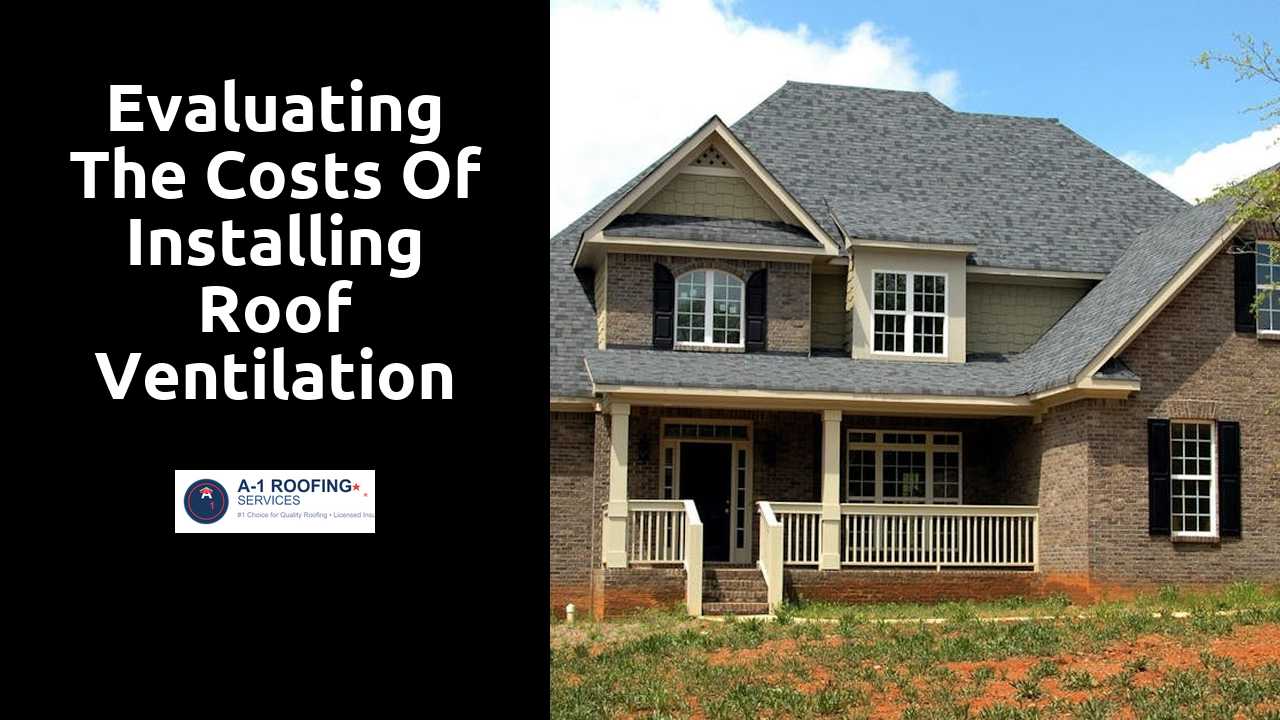
Evaluating the Costs of Installing Roof Ventilation Systems
Table Of Contents
Regional Variations in Costs
The costs associated with installing roof ventilation systems can vary significantly based on geographical location. Factors such as local labor rates, availability of materials, and regional building codes influence pricing. In metropolitan areas, where labor and overhead costs tend to be higher, homeowners may find themselves facing steeper prices than those in rural settings. Additionally, different climates can necessitate specific ventilation solutions, further affecting the overall cost.
Understanding the economic landscape of a particular region is crucial for budgeting effectively. Homeowners in regions with harsh winters may require more extensive ventilation systems to guard against ice dams, while those in warmer areas might prioritize airflow to reduce cooling costs. This regional specificity means that potential buyers should gather multiple quotes from local contractors. Comparing these bids can help identify the best options tailored to both the local market and individual home requirements.
Continue reading this article for more information.
Understanding Local Market Rates
When considering the installation of roof ventilation systems, it's essential to gauge the local market rates that can significantly influence overall costs. Prices for materials and labor can vary widely based on geographical location. Regions with higher living costs often see elevated charges for installation services. Additionally, the demand for roofing services in a particular area can also play a role. In markets where construction is booming, prices may rise due to increased competition for skilled professionals.
It's also important to assess the types of ventilation systems offered by local contractors. Some may specialize in high-efficiency systems while others focus on more budget-friendly options. These differences can impact not only the upfront installation costs but also the long-term performance and energy savings associated with various systems. Researching and comparing quotes from multiple providers can help homeowners make informed decisions based on the prevailing market conditions in their area.
Long-term Savings with Roof Ventilation
Investing in roof ventilation systems can yield significant long-term savings for homeowners. By promoting proper air circulation in attics and other enclosed spaces, these systems help regulate indoor temperatures, reducing the need for excessive heating or cooling. As a result, energy bills can decrease, making ventilation an attractive option for those looking to manage utility costs effectively.
Moreover, improved ventilation contributes to the overall lifespan of roofing materials. When heat and moisture build up without proper ventilation, it can lead to premature deterioration of shingles and structural components. By mitigating these risks, homeowners may avoid costly repairs or replacements down the line, further enhancing the financial benefits of installing a robust roof ventilation system.
Energy Efficiency and Reduced Bills
Installing a roof ventilation system can significantly enhance a home’s overall energy efficiency. By allowing for proper air circulation, these systems help maintain a more consistent indoor temperature, reducing the need for air conditioning during hot months. This improved airflow can lead to lower energy consumption as HVAC systems do not have to work as hard to cool or heat the living space. Homeowners may notice a marked difference in their utility bills over time, providing a compelling reason to consider the initial investment in ventilation.
In addition to direct energy savings, enhanced roof ventilation can also prolong the lifespan of the HVAC system. With less strain on the equipment, homeowners can avoid frequent repairs and replacements, contributing to further cost reductions. An efficient ventilation system works well with other energy-efficient practices, creating a more comfortable living environment while decreasing overall expenses. The cumulative financial benefits make roof ventilation an attractive prospect for many homeowners aiming to improve their living conditions.
Maintenance Costs After Installation
Regular maintenance is crucial for ensuring the longevity and efficiency of roof ventilation systems. It often involves periodic inspections to check for debris, blockages, or any signs of damage. Homeowners should also consider cleaning the vents and ducts to maintain optimal airflow. These routine tasks can prevent more significant issues from arising in the future and extend the life of the system.
While some maintenance work can be performed by homeowners, professional inspections may occasionally be necessary. Hiring a qualified technician can add to the overall maintenance costs. However, investing in expert services can provide peace of mind and ensure that the system operates at its best. Proper upkeep not only enhances indoor air quality but also contributes to energy efficiency, further justifying the associated costs.
Regular Upkeep for Longevity
Maintaining roof ventilation systems is crucial for ensuring they function efficiently over time. Regular inspections can help identify any issues early on, such as blockages or leaks. Cleaning the vents and the ductwork is essential to prevent the buildup of dust and debris, which can hinder airflow. Seasonal check-ups provide homeowners an opportunity to assess if adjustments or repairs are needed.
In addition to cleaning, monitoring the performance of the system contributes to its longevity. Observing temperature changes in the attic space can indicate whether the ventilation is effectively reducing heat buildup. Addressing any inconsistencies promptly can help prevent costly repairs later. Homeowners should incorporate maintenance as part of their routine home care to maximize the benefits of their investment in a roof ventilation system.
Related Links
Comparing Active and Passive Roof Ventilation MethodsUnderstanding the Importance of Roof Ventilation in Energy Efficiency